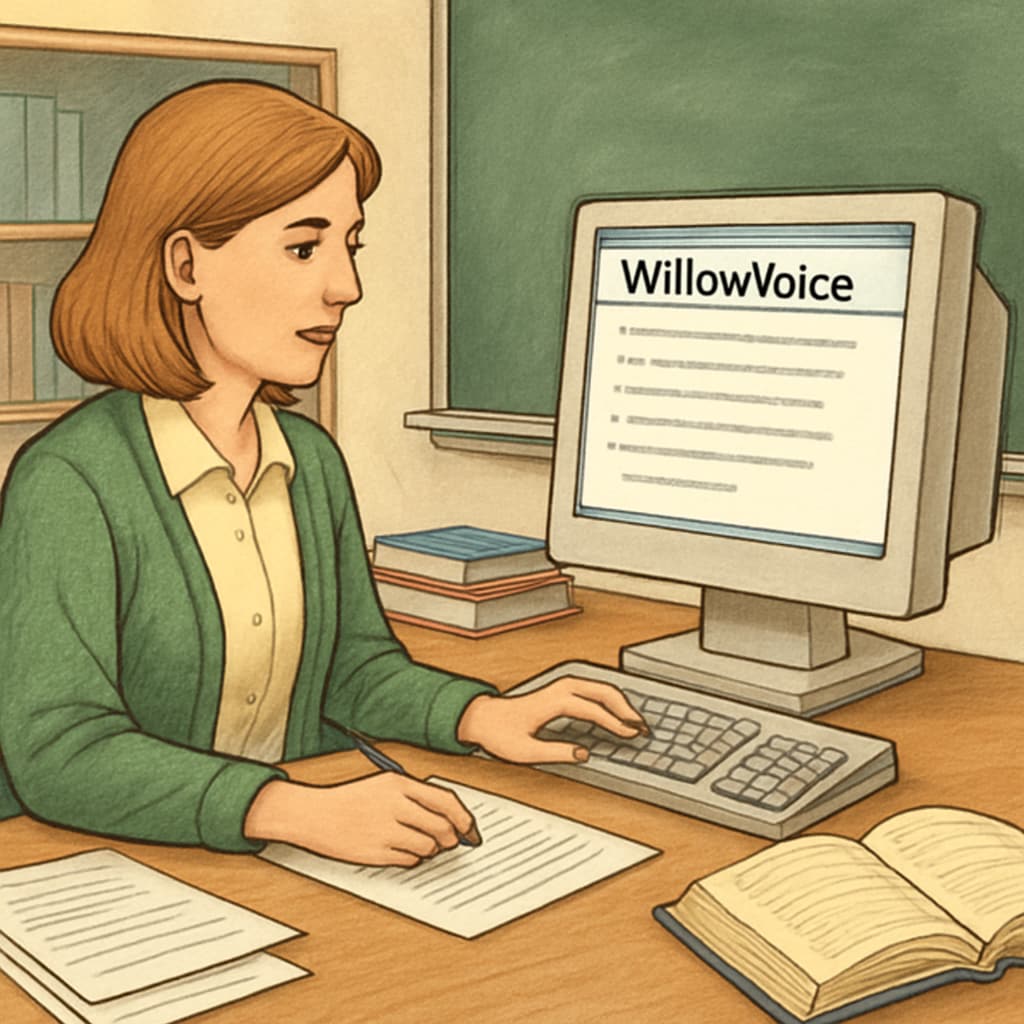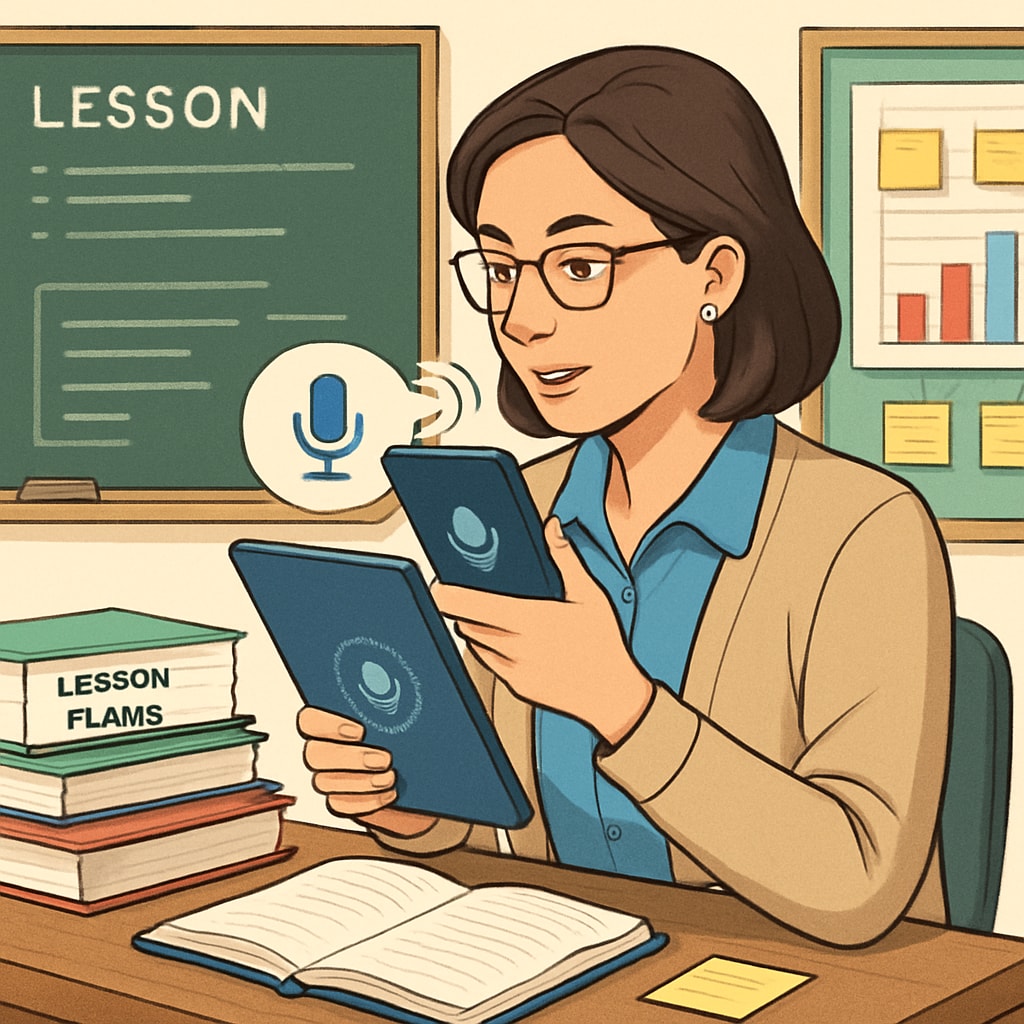In recent years, voice recognition technology has emerged as a transformative tool in education, offering significant benefits to streamline teacher workflows. Platforms like WillowVoice are leading the charge in reducing administrative burdens, allowing teachers to focus more on their core responsibilities. By implementing such tools, teachers can enhance teaching efficiency, improve the quality of feedback provided to students, and ultimately elevate the overall educational experience.
How Voice Recognition Technology Addresses Teacher Workload
K12 teachers often face a demanding mix of instructional duties and administrative tasks, from grading assignments to preparing lesson plans and documenting student progress. These non-teaching responsibilities consume valuable time that could be better spent on engaging with students. Voice recognition systems like WillowVoice provide a solution by automating repetitive processes and simplifying documentation tasks.
- Automated Transcription: Teachers can dictate lesson notes, feedback, or reports, which are instantly transcribed into text format.
- Streamlined Feedback: Instead of typing detailed comments, educators can record their thoughts, and the system converts them into actionable feedback for students.
- Task Scheduling: Voice commands can be used to set reminders for meetings, deadlines, or lesson adjustments.
As a result, teachers save time and energy, which can be redirected toward enhancing lesson quality and building stronger relationships with their students.

The Role of WillowVoice in Optimizing Teaching Efficiency
WillowVoice stands out among other voice recognition tools due to its user-friendly interface and its specific design for educational settings. This technology is tailored to meet the unique needs of teachers, ensuring that the platform is intuitive and efficient. Some of the key features of WillowVoice include:
- Accuracy: The software leverages advanced AI algorithms to recognize educational terminology, ensuring high transcription accuracy.
- Integration: WillowVoice integrates seamlessly with learning management systems (LMS) and grading platforms, reducing the need for manual data entry.
- Customization: Teachers can personalize voice commands to align with their specific workflows.
For example, a teacher might use a command like “Record feedback for Math Project 1,” and WillowVoice will not only transcribe the feedback but also associate it directly with the corresponding student assignment in the LMS. Such features eliminate redundant steps and promote a smoother teaching experience.

Improving Feedback Quality and Student Engagement
One of the most critical aspects of teaching is providing timely and meaningful feedback. Voice recognition technology enhances this process by enabling educators to communicate their thoughts more naturally and thoroughly. Instead of limiting themselves to concise, typed comments, teachers can use their voice to articulate nuanced feedback, which is then transcribed accurately and shared with students.
Moreover, the efficiency offered by tools like WillowVoice allows teachers to dedicate more time to one-on-one interactions with students. As a result, students benefit from more personalized guidance, which fosters better engagement and learning outcomes. Studies have shown that timely and detailed feedback is closely correlated with student success (Feedback in Education on Britannica).
The Future of Voice Recognition in Education
As voice recognition technology continues to evolve, its potential applications in education are expanding. Future advancements may include real-time language translation for multilingual classrooms, AI-driven insights for personalized learning, and even voice-controlled smart classrooms. By embracing these tools, schools can create more efficient and inclusive educational environments.
For educators, the integration of voice recognition systems like WillowVoice represents an opportunity to reclaim their time and energy, prioritizing what matters most: teaching and inspiring the next generation of learners. As more schools adopt these innovative solutions, the role of technology in supporting educators will only grow stronger (Educational Technology on Wikipedia).
In conclusion, voice recognition technology is not just a convenience—it’s a game-changer for K12 education. By reducing administrative workloads, enhancing the quality of teacher feedback, and streamlining workflows, tools like WillowVoice are setting a new standard for educational excellence.


